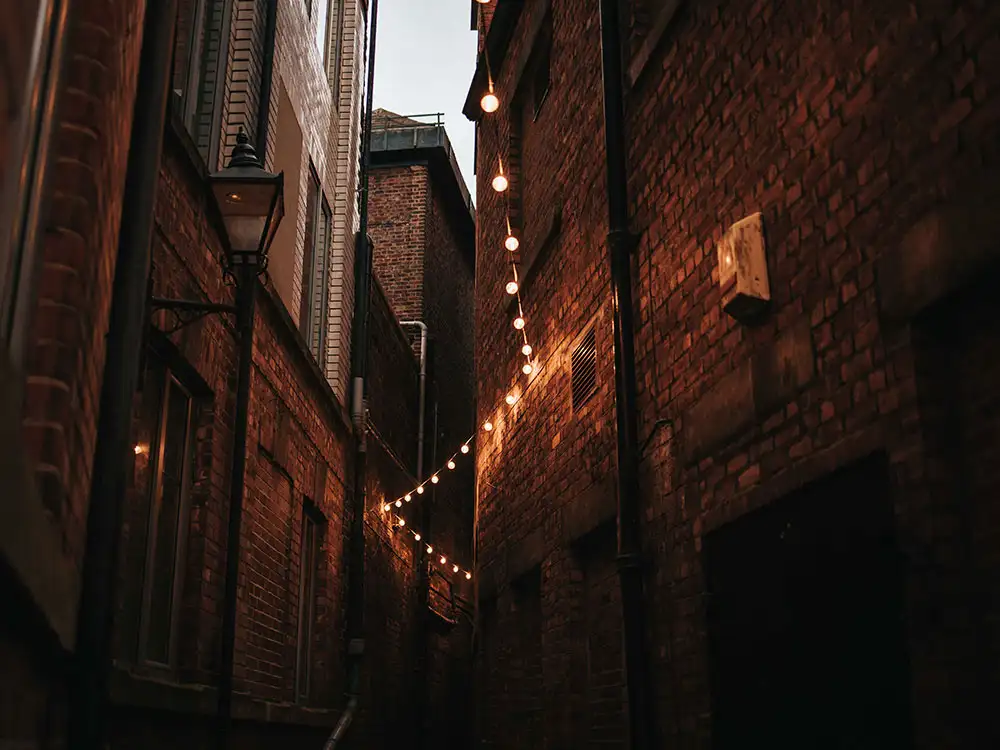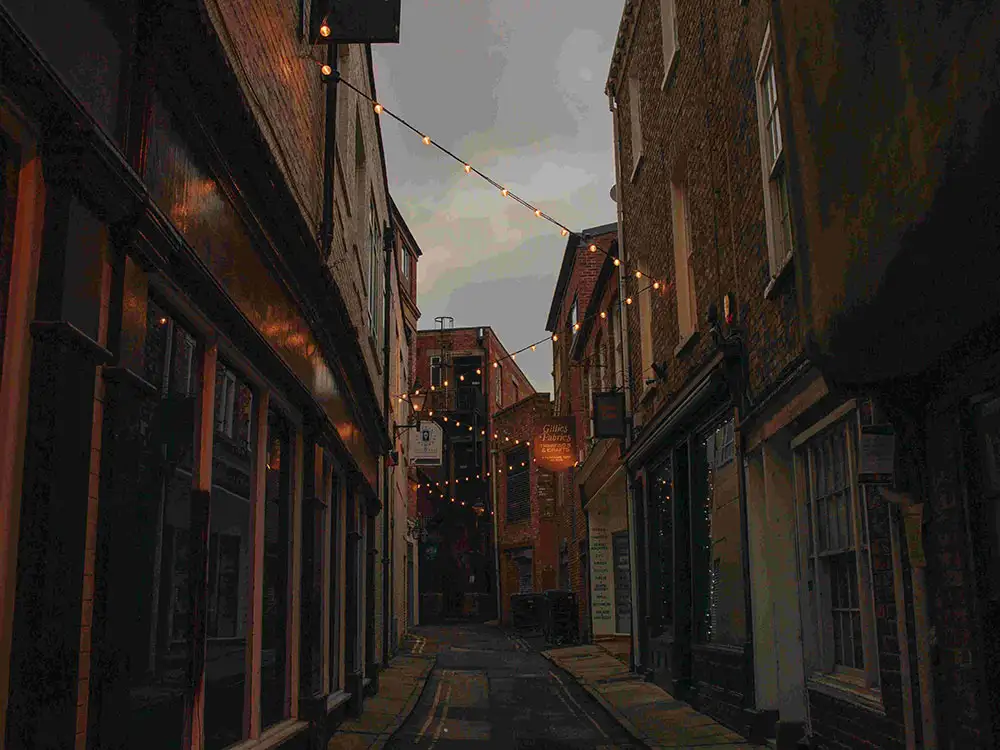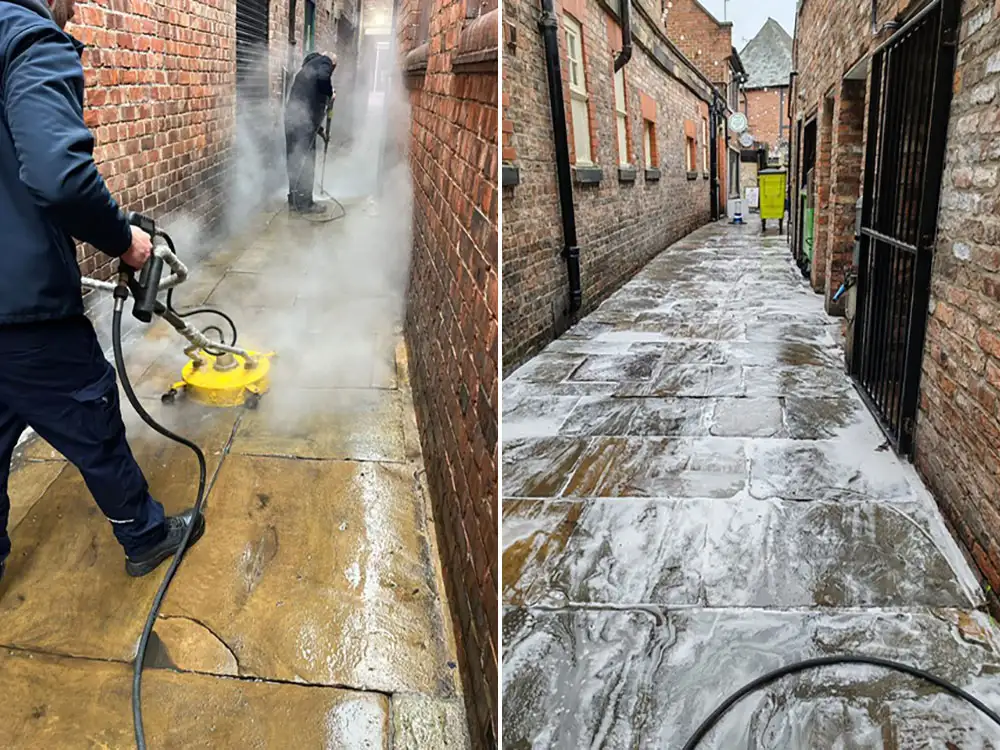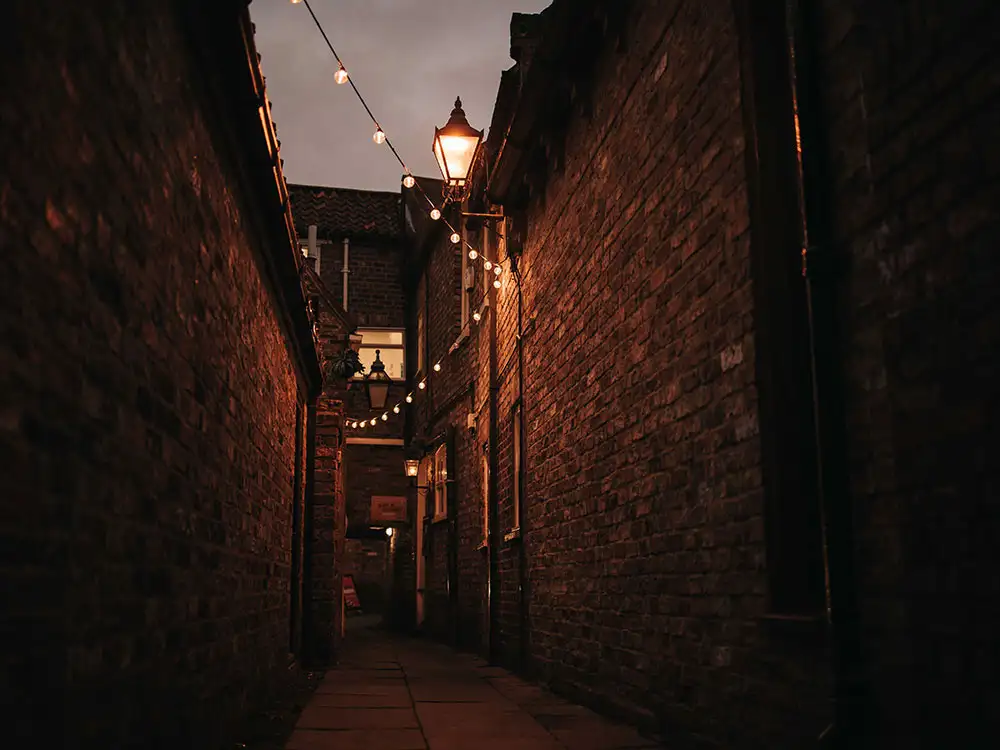York’s snickelways have been part of the historic charm of the city for centuries – and now they are the brightest and safest they’ve ever been.
For the first time festoon lighting has been installed in seven of the ancient alleyways.
After being given a deep clean to remove dirt, graffiti and cigarette butts, the permanent lighting was fixed in place.
And plans for the snickelways don’t stop at the illuminations.
The snickelways included in the project are:
- Coffee Yard
- Lunds Court
- Nether Hornpot Lane
- Finkle Street
- Peter Lane
- Pope’s Head Alley
- and Le Kyrk Lane.
The transformation is courtesy of the York BID (Business Improvement District) – and was funded with money from the Police, Fire and Crime Commissioner, York Safer Business Partnership and York Civic Trust.

These spaces are a key part of York’s unique history and character, but they had become neglected and unsafe, the BID said.
So the lights project aims to reduce crime, enhance safety and improve their appearance and use.
York BID operations manager Carl Alsop said: “It’s incredible to see the transformation. With a good clean, a lick of paint, and the addition of lighting, these spaces have an entirely new look and feel.
“We’re proud to celebrate these once-forgotten spaces. As part of phase 2, we’ll be adding educational street art to encourage exploration of these unique areas, which offer a gateway into York’s fascinating 2000-year history.”
History trail

The BID’s street cleaning team played a crucial role in the rejuvenation, conducting a deep clean that included the removal of chewing gum, weeds and graffiti.
Volunteers also took part in the BID’s rejuvenation days repainting infrastructure like down pipes and fire doors.
The next step is to create a free history trail.
The BID, the Civic Trust, the University of York and Bright White are involved in this project.
The trail would see artistic signage added, and will showcase some of York’s lost history, such as the now fallen Church of St Peter-the-Little, York’s medieval cattle markets, and the craftsmen that built the city.


Kate Giles, Professor from the University of York, said: “Whilst the term ‘snickelways’ was coined by Mark Jones in 1983, many of these ancient alleyways developed in the middle ages when they offered shortcuts within and between houses, workshops, marketplaces and churchyards.
“It is fantastic to see the BID embrace their hidden histories and encourage both residents and visitors to rediscover and reclaim these streets as modern routeways connecting people and place in both the past and the present.”
The project supports the BID’s Purple Flag objectives, to foster a safer, cleaner city centre, and a positive nighttime experience for all.
